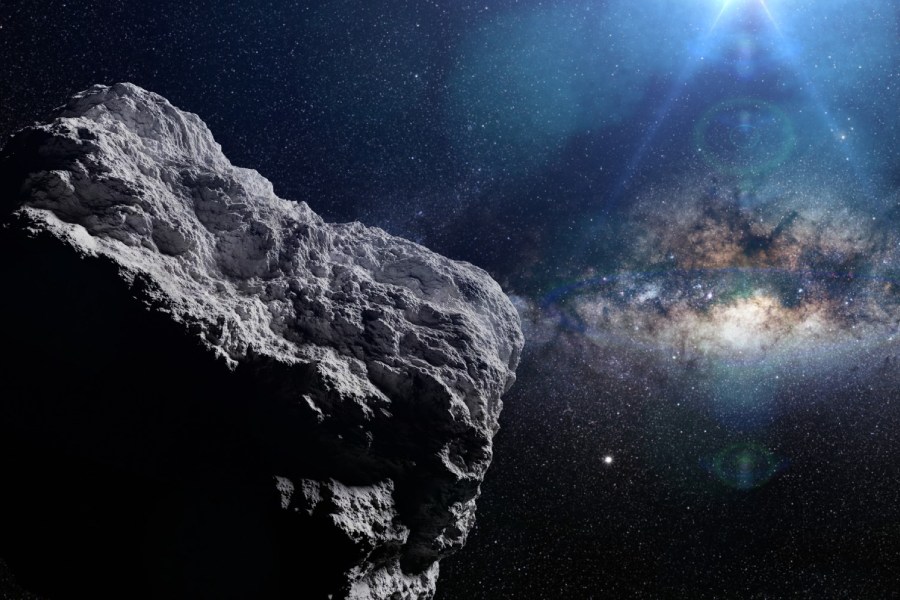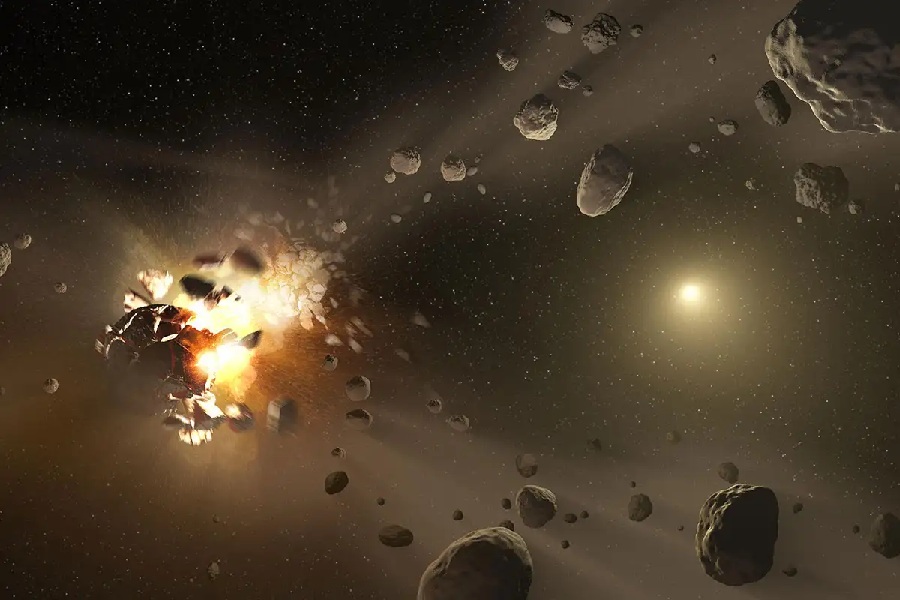In the vast expanse of our Solar System, there are countless rocky bodies orbiting the sun. Each of these bodies has its own unique story. Among these celestial wanderers, two terms are often used interchangeably. These terms are asteroids and meteorites. But what is the difference between asteroid vs meteorite?
In this article, we’ll dive into the origins, compositions, and impact of asteroids and meteorites on our planet. We will explore the secrets of these cosmic visitors, from the asteroid belt between Mars and Jupiter to the meteors illuminating our night skies.
Join us as we discover how asteroids and meteorites have shaped our understanding of the universe. Explore the potential risks and opportunities they present for the future of space exploration. Get ready to unravel the mysteries of these intriguing space rocks and gain a deeper appreciation for the wonders that lie beyond our world.

Asteroid vs Meteorite: Major Differences
Asteroids are rocky bodies that orbit the Sun, varying in size from meters to hundreds of kilometers. Most of them reside in the Asteroid Belt between Mars and Jupiter. When an asteroid enters Earth’s atmosphere, it becomes a meteor, creating a bright streak of light in the sky.
If a meteor survives its journey through the atmosphere and reaches Earth’s surface, it is called a meteorite. Meteorites are the remnants of meteors and can be composed of rock or metal. These space rocks offer valuable insights into the composition and history of our Solar System.
Fundamental Differences
What is the difference between an asteroid and a meteorite? Asteroids and meteorites are fascinating space rocks with distinct characteristics that set them apart. Asteroids are found orbiting the Sun in the asteroid belt between Mars and Jupiter, believed to be remnants from the formation of the Solar System.
They follow stable, elliptical orbits. However, they can collide, creating fragments or altering their trajectories. Asteroids are composed of various materials, including rocks, metals, and ice. Their internal structure ranges from solid bodies to rubble piles.
On the other hand, meteorites are rocks that have survived entry through Earth’s atmosphere. They originate from asteroids, comets, or planetary bodies. Before reaching Earth, they travel as meteoroids.
They burn up upon entering the atmosphere, creating meteors. Meteorites, classified as stony, iron, or stony-iron based on their composition, provide valuable information about the early Solar System.
Understanding the differences in positions, trajectories, behaviors, compositions, and structures of asteroids and meteorites is crucial. It offers unique insights into the history of our Solar System.
Composition of an asteroid
The composition of an asteroid is a fascinating subject, providing valuable insights into the formation and evolution of our Solar System. Asteroids are composed of various chemical elements and compounds, the most common ones including carbon, silicon, oxygen, and metals.
The specific chemical makeup of an asteroid depends on its formation history – those formed closer to the sun have more metals. In contrast, those formed farther away may have higher concentrations of ice and organic compounds.
Asteroids can be categorized into three main types based on their composition: carbonaceous, silicate, and metallic. Carbonaceous asteroids, the most common type, contain high amounts of carbon and organic compounds.
Silicate asteroids are composed mainly of silicate minerals. Metallic asteroids, although rare, are primarily composed of metallic iron and nickel. Understanding asteroid composition is crucial for scientific study and essential for potential resource utilization and planetary defense efforts against impact threats.

Composition of a meteorite
Meteorites are composed of various chemical elements. The most abundant ones include silicon, oxygen, iron, and magnesium.
They also contain various minerals, such as silicates, iron-nickel alloys, and organic compounds. Meteorites are classified into three main types based on their composition: stony, iron, and stony-iron.
Stony meteorites, the most common type, are primarily composed of silicate minerals and are further divided into chondrites and achondrites. Stony-iron meteorites, the rarest type, contain both silicate minerals and iron-nickel alloys.
Studying the composition of meteorites provides valuable scientific insights into the early Solar System. It also contributes to planetary science and our understanding of the potential for life in the universe.
Origin of Asteroids and Meteorites
The origin of asteroids and meteorites is closely linked to the formation and evolution of the Solar System. Asteroids formed during the early stages of the Solar System’s development. They are remnants of the protoplanetary disk that never fully coalesced into planets.
Dust particles and planetesimals in the disk accumulated through gravitational collapse, streaming instability, and turbulent concentration. These accumulations grew into the asteroids we observe today.
Meteorites, conversely, are derived from the fragmentation and ejection of material from asteroids, comets, and other celestial bodies. When these fragments survive their passage through Earth’s atmosphere and reach our planet’s surface, they become meteorites.
The main sources of meteorites are the asteroid belt and near-Earth asteroids. However, some rare meteorites have been traced back to the Moon and Mars.
Studying the origin of asteroids and meteorites provides valuable insights. It helps scientists understand the formation and history of our Solar System.
Asteroid vs Meteorite: Physical Characteristics Differences
Asteroids and meteorites exhibit distinct physical characteristics that set them apart. They are larger, intact bodies with a defined structure, ranging from solid objects to rubble piles.
Asteroids have a wide range of sizes. Some are small rocks, while others are massive bodies hundreds of kilometers in diameter.
They display surface features such as impact craters, ridges, and grooves. These features reflect their composition, history, and interaction with the space environment.
On the other hand, meteorites are much smaller fragments. They come from larger celestial bodies and have survived passage through Earth’s atmosphere. Meteorites lack the complex internal structure found in asteroids and are typically limited in size, ranging from millimeters to a few meters.
Their surfaces exhibit unique features, such as fusion crust and regmaglypts, which are influenced by atmospheric entry. Additionally, meteorite surfaces are affected by terrestrial weathering.
The size and surface characteristics of asteroids and meteorites provide valuable insights. They help understand their formation, composition, and the processes they undergo over time.
Conclusion
Comparing asteroid vs meteorite highlights their fascinating diversity and complexity, offering intriguing insights into the Solar System’s formation. By exploring the fundamental differences in their composition, origins, and physical characteristics, scientists gain a deeper understanding of these celestial objects and the processes that shaped them.
Asteroids, with their larger sizes and varied compositions, provide valuable insights into the early stages of planetary formation. Meteorites offer tangible evidence of the materials that build our cosmic neighborhood.
We hope this article helped you better understand the distinct nature of asteroids and meteorites. It may have sparked your curiosity to explore further these captivating remnants of our Solar System’s past.
